Five Belt & Road Projects In Southeast Asia That Foreign Investors Should Be Exploiting
Op/Ed by Chris Devonshire-Ellis
China’s Belt & Road Initiative officially kicked off in 2013, some seven years ago, under the initial title of ‘One Belt One Road’. That was later dropped as it became apparent that the scale of demand for projects would be rather more than single Eurasian and Maritime routes. While there has been some controversy over China’s financing and exporting of its construction SOEs to build these projects, many are now in the final stages of completion. Not all, such as Power plants, will be accessible for any additional foreign investment as future management and operation of these facilities will be usually split between the sovereign Government and any involved Chinese contractors. However, other projects offer foreign investors the ability to get involved by exploiting the infrastructure build. This includes property investments, transportation, waste and water management, power, and catering for human needs such as restaurants, catering, computer services, tourism and business services and so on.
We can examine five primary projects about to reach maturity in Southeast Asia as follows:
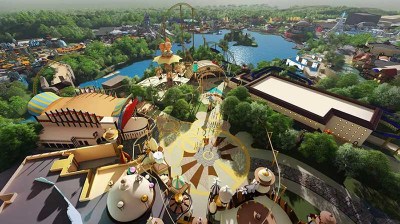
MNC Lido City is an integrated lifestyle residential, commercial, entertainment and resort destination area of 3,000 hectares in Lido, Bogor, West Java which is next to the Provinces of DKI Jakarta and Banten, surrounded by a population of more than 70 million people. Located about 60 kilometers from Jakarta, MNC Lido City can be directly accessed via the Bocimi Toll Road just an hour away from Jakarta.
Set to be a world-class destination, MNC Lido City comprises of a theme park resort, international four-star, five-star, and six-star hotels, luxury villas and condominiums, PGA standard 18-hole golf course designed by Ernie Els, exclusive residences, retail, dining, entertainment, international circuit, university, movieland, and other supporting facilities.
A video of the facility can be viewed here.
Laos – Vientiane-Boten Railway
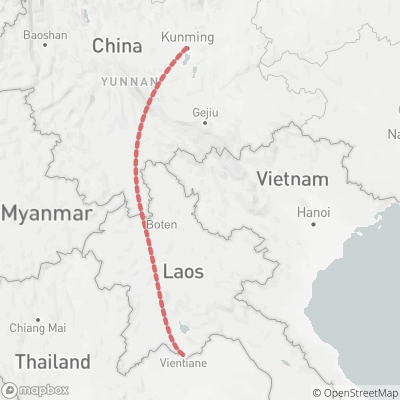
The Vientiane–Boten railway is a 414 km (257 mi) 1,435 mm standard gauge, electric powered railway under construction in Laos, between the capital Vientiane and the small town of Boten on the border with China, where it connects with China’s national rail network and the significant Kunming terminus. To the south, it will connect with the Thai railway network and lead onto Bangkok and ultimately to Singapore. It is the first railway in Laos. The railway is expected to be completed by the end of next year.
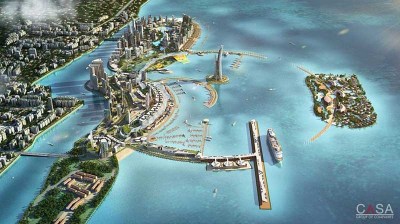
The Melaka (Malacca) Gateway is an off-shore development of artificial islands in Malacca, Malaysia. Development work began in February 2014 and is expected to be fully completed by 2025. Some parts of the facility are already expected to open once the Covid pandemic dies down. The project consists of 12 precincts including residential, commercial, cultural, entertainment and lifestyle elements, and include the Gateway Entertainment Precinct, Malacca Marina & Cruise Centre, Malacca Historical Walk, Gateway Maritime Arena & Beacon, Branded Fashion District, International Theme Park, Malacca Cultural Walk, Waterfront Marina Villas & Resorts, Gateway Wellness & Lifestyle Precinct, Malacca Skyline Apartments, Lohas Park & Residences and Eco Isle Resorts. The 609-acre project will see the first phase attracting some 900,000 visitors during the first year of operations, including international cruise passengers. The first phase, will include the Malaysia Eye, two hotels, several resorts, a heritage walk, a fashion district and a marina terminal. The marina terminal alone will be able to handle three cruise ships at the same time.
Myanmar – Kyauk Phyu Special Economic Zone
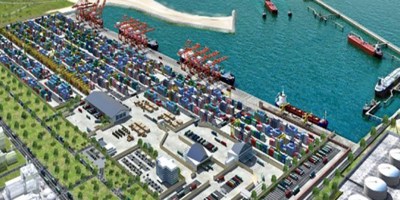
The Kyauk Phyu Special Economic Zone (ကျောက်ဖြူအထူးစီးပွားရေးဇုန်) is a 1,600 hectares (4,000 acres) Burmese Special Economic Zone being developed on Ramree Island in Rakhine State, with work commencing in September 2013. The project initially began as a joint venture between the Chinese and Burmese governments, but has since transitioned to private developers. It is accessible to the Shwe gas field in the Bay of Bengal and possesses oil and gas terminals and pipelines for natural gas and oil. In addition to the Oil and Gas facilities, the SEZ provides additional facilities for businesses as follows:
- 250 million-ton capacity wharfs to accommodate 300,000-ton freighters.
- Sea port
- Railway and logistics park to store 10 million tons of goods.
- – Industrial Cluster (40 km²)
- Oil refinery and petrochemical industries (12 km²)
- – Refined oil, 10 million tons/year
- – Ethylene, 800,000 tons/year
- – Other petrochemical products, 1.5 million tons/year
- – Fertilizer, LNG etc,3 million tons/year
- Metal Industries (14 km²)
- – Iron and steel, 5 million tons/year
- – Other refined metals, 300,000 tons/year
- Marine Service Industry (3 km²)
- – Two marine docks to service regional shipping traffic and dismantle old ships for sale of materials.
- Processing and manufacturing industries (11 km²)
- – Agricultural and aquatic products, gems and wood.
- – Textiles, metal, plastics, car parts and electrical appliances.
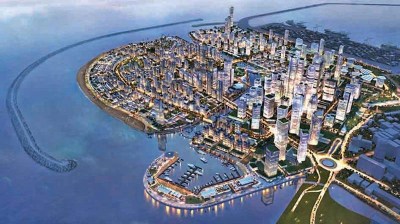
Sri Lanka’s Colombo Port City is turning into a cash cow for the Sri Lankan government, its Chinese investors, and for savvy future investors in the project. While the project captured criticism over the terms of the deal, the financial and development impact of the project has been grossly undervalued. Six years in the making, the land re-development, which has been taking place on previously underutilized land near the Colombo Fort area, has been busy with dredging and reclamation. It includes an artificial island, a marina, deep water port and integrates commercial, residential, leisure, and entertainment functions. Intended to become Colombo’s Central Business District, the City has its eyes on attracting some HQ and back office functions away from nearby Singapore. Now the reclamation is complete, the CPC is now offering land to investors.
With an initial price tag of US$1.5 billion for the reclamation alone, the project has been Sri Lanka’s largest ever foreign direct investment. Chinese SOE’s China Harbour Engineering (CHEC), China Communication Construction and the Sri Lanka Port Authority have been the major players, with the Chinese stumping up the finance. However, in a rebuttal to the usual accusations of debt traps, the project came in at US$800 million and ahead of schedule. The total amount of land reclaimed amounts to 269 hectares – just over a square mile. Breakwater construction has also been completed and independently verified by Dutch experts as being ‘flawless’. This means that phase two – the actual construction build – can now take place. This is where the real foreign investor opportunities lie. There are more details about the CPC project in our previous article here.
Singapore As A Southeast Asian Business & Investment Hub
China’s Belt & Road Initiative is now throwing up completed infrastructure that now means foreign investors – who struggled to compete with China’s SOE’s and banks in the construction and loans required – can finally engage via bringing in the additional hardware, software and services that such projects require. This is an advantage as it means that investing in the opportunities that these projects bring doesn’t have to involve deals with Chinese SOE’s, purely the local government regulatory issues concerning foreign investment in these nations. All the above bar Sri Lanka are ASEAN member states, with nearby Singapore serving as the de facto regional finance and service capital. In fact, it makes good sense to utilize Singapore itself as a service centre for managing investments into BRI project completion opportunities in Southeast Asia. Our firm, Dezan Shira & Associates has a presence in Singapore as well as much of ASEAN and Asia and provides intelligence and support services to foreign investors throughout the region.
We will continue this series of articles as we examine BRI projects coming to fruition in other parts of the world. To ensure you receive these updates, a complimentary subscription to Silk Road Briefing can be obtained here.
Related Reading
- The Most Influential Countries Across The Asian Belt And Road Initiative 2020
- Why Singapore is a Good Base for Establishing Financial Treasury Centers
- Corporate Budget Planning 2021: Disruptions, China’s Consumer Market, Emerging ASEAN, the Digital RMB, and BRI Hot Spots
About Us
Silk Road Briefing is written by Dezan Shira & Associates. The firm has 28 offices throughout Asia, and assists foreign investors into the region. For strategic advisory and business intelligence issues please contact the firm at silkroad@dezshira.com or visit www.dezshira.com





